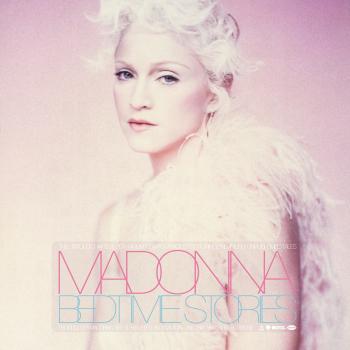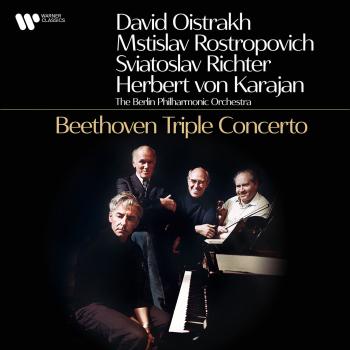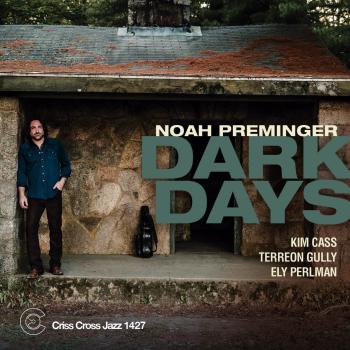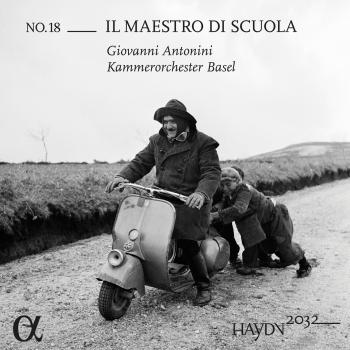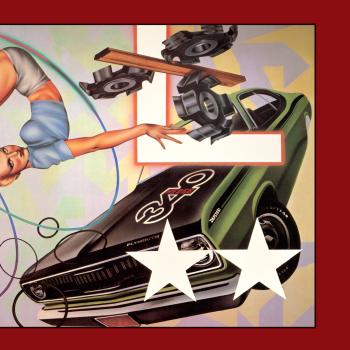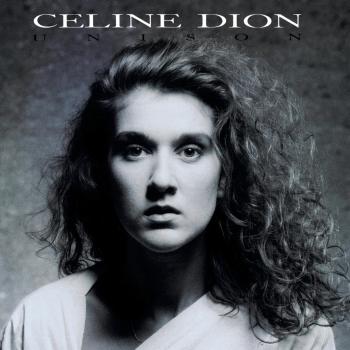
Chris Connor Sings Lullabys For Lovers Chris Connor
Album Info
Album Veröffentlichung:
1954
HRA-Veröffentlichung:
05.11.2013
Das Album enthält Albumcover Booklet (PDF)
Entschuldigen Sie bitte!
Sehr geehrter HIGHRESAUDIO Besucher,
leider kann das Album zurzeit aufgrund von Länder- und Lizenzbeschränkungen nicht gekauft werden oder uns liegt der offizielle Veröffentlichungstermin für Ihr Land noch nicht vor. Wir aktualisieren unsere Veröffentlichungstermine ein- bis zweimal die Woche. Bitte schauen Sie ab und zu mal wieder rein.
Wir empfehlen Ihnen das Album auf Ihre Merkliste zu setzen.
Wir bedanken uns für Ihr Verständnis und Ihre Geduld.
Ihr, HIGHRESAUDIO
- 1 Lush Life 02:55
- 2 Out Of This World 02:55
- 3 A Cottage For Sale 02:35
- 4 How Long? 02:33
- 5 Goodbye 02:33
- 6 Stella By Starlight 02:28
- 7 Gone With The Wind 02:20
- 8 He's Coming Home 02:44
Info zu Chris Connor Sings Lullabys For Lovers
Chris Connor epitomized cool jazz singing in the 1950s. Influenced by Anita O’Day, the torchy, smoky singer wasn’t one for aggression. She used subtlelty and restraint to her maximum advantage. Connor debuted as a solor artist in 1953, recording three albums for Bethlehem Records. She reached the height of her popularity in the 1950s, when she delivered her celebrated versions of Billy Strayhorn’s “Lush Life” and George Shearing’s “Lullaby of Broadway,” and recorded such excellent albums as ‘The Rich Sound of Chris Connor’ and ‘Lullabies of Birdland’ for Bethlehem.
„Although cool jazz diva Chris Connor recorded the bulk of her albums with Atlantic Records, her first two solo albums were Chris Connor Sings Lullabys for Lovers and Chris Connor Sings Lullabys of Birdland, 10-inch LPs she recorded for Bethlehem Records. Connor had been singing with a number of big bands—Claude Thornhill and Stan Kenton, perhaps the best known. Eventually, probably looking for the opportunity to express herself creatively, she turned to fronting smaller ensembles where she could make a greater impact. Her Bethlehem Records contract and the success of her first two albums suggest it was the right move.
A remastered version of her Lullabys for Lovers is now available among the classic Bethlehem jazz albums reissued this year by Verse Music Group and Naxos of America. It is also available in digital and vinyl. Since it was a 10-inch album, there are only eight songs and the total time is a little over 20 minutes. It seems fair to ask, when so many of the albums in the current flood of remastered classics add a fair share of additional material to the original album, why this reissue offers such short shrift. It wouldn’t have been a bad idea if they had gotten both of the Lullaby albums on one disc.
Still, in an age when more and more people (although not necessarily jazz enthusiasts) are buying their music by the song, I suppose it is less necessary to stuff a CD. More than likely, Lullabys of Birdland is on tap for the future.
If Chris Connor never quite had the recognition accorded to an Ella Fitzgerald, a Billie Holiday, or even a Sarah Vaughan, she had a way with a song that was something special. Her readings of lyrics were both sensitive and tasteful. Her style was often seductively intimate. At a time when “cool” was the dominant mode in jazz, Chris Connor’s vocals were the embodiment of “cool.”
Her choice of songs is interesting to say the least. There are the jazz standards, songs like a killer version of Billy Strayhorn’s “Lush Life” and the venerable Benny Goodman sign-off, “Goodbye.” She takes these tunes that have been around seemingly forever and makes them new again. She swings her way through the Gershwin’s “How Long Has This Been Going On” and does a bang up job with the jazz favorite “Gone With the Wind.” There is a purity in her smokey vocals that is quite refreshing.
She works with some tunes that may have been popular back in the day, but have not heard too often in recent years. “Cottage For Sale” and “He’s Coming Home” have fairly disappeared from the modern repertoire, but hearing what Chris Connor does with them, you have to wonder why they aren’t played more often.
The Vinnie Burke Quartet, with its somewhat unusual instrumentation—Ronny Odrich (clarinet/flute), Joe Cinderella (guitar), Don Burns (accordion) and Burke (bass)—is supplemented by drummer Art Madigan. It is a laid-back ensemble that keeps the spotlight on the singer.
Lullabys for Lovers is a stylish album. Its only limitation is that there isn’t enough of it. (Jack Goodstein, www.blogcritics.org)
Chris Connor, vocals
Don Burns, accordion
Vinnie Burke, bass
Art Mardigan, drums
Ronnie Odrich, flute, clarinet
Joe Cinderella, guitar
Recorded in NYC, August 21, 1954.
Digitally remastered
Chris Connor
For the past 20 years, Chris Connor has seemed to be more of a legend than an active force on the jazz scene. “I was struggling like everybody else,” she says. “But I always sang, and I never had to do anything else. I did not retire, as the rumor goes around.” With the release of Chris Connor/Classic, her first for Contemporary, the honey-toned singer is certainly back and the strength of her performance is evidence enough that she has never really been away.
Born in 1927 in Kansas City, Missouri, Connor started her musical studies on clarinet, but her career direction was clear to her at an early age. “I always knew I wanted to be a singer,” she says. “I never wanted to do anything else.” In her late teens and early twenties, Connor found little opportunity to sing in her hometown. But while working as a secretary in Jefferson City, she would commute to the University of Missouri, in Columbia, and work with the college jazz band. The band based much of its repertoire upon Stan Kenton arrangements, and although she was influenced by such vocalists as Sarah Vaughan, Ella Fitzgerald, and Peggy Lee, Connor paid particular attention to the styles of two famous Kenton singers, June Christy and Anita O’Day. “I had my sights set to sing with Kenton,” she remembers. “That was my dream, so naturally I used to listen to them more than I did to other people.”
While the Midwestern heartland had been the breeding ground for important jazz and blues styles, it was not the place for a singer to build a career in the postwar years. “Finally I said, ‘This is no good, I’ve got to go to New York if I’m going to do anything,’“ Connor recalls. “So I saved my money and I went to New York. . . and starved. I mean literally! I didn’t eat for three days at a time. But I wouldn’t go back to Kansas City.” That was in 1947, and after a year of scuffling, Connor gained an audition with bandleader Claude Thornhill, who hired her as the vocalist for his orchestra. She was with Thornhill for the next five years and then, while singing with Jerry Wald’s band, she received the dream phone call from Stan Kenton, inviting her to join his orchestra. June Christy had heard Connor on a radio broadcast, and recommended her to Kenton. Chris was chosen over dozens of singers who were auditioning for the coveted position. “My voice seemed to fit the band,” she says, “with that low style like Anita’s and June’s, and I got the job.”
The stint with Kenton lasted only ten months during 1952-53, but it was enough to catapult Connor into national recognition. Her recording of “All About Ronnie” introduced her rich tones and coolly swinging style to a wide audience, and she was hailed as the logical successor to O’Day and Christy in the Kenton caravan. But the touring ritual, with its fast food and one-night stands, and its long and boring bus rides over three or four hundred miles a night, quickly drained Connor’s enthusiasm for life on the road. “By that time I’d had about six years of one-nighters,” she says, “and I’d just about had it. I couldn’t take any more hot dogs and hamburgers, and putting my clothes up in the shower so the wrinkles would come out.”
Deciding to take a few wrinkles out of her career, Connor settled down (as much as that’s possible) in New York City, living for a while just four blocks from the legendary Birdland. But to this day, she values the musical training she received while with Kenton, especially the skills related to timing, phrasing, and “how to come in on exactly the right note while 18 or 20 musicians are playing their parts.” As a soloist, Connor went on to record for the Bethlehem label and, starting in 1956, for Atlantic, a relationship that lasted nine years and included a 1960 reunion date with fellow Kenton alumnus Maynard Ferguson (Double Exposure, reissued in 1984).
The 1960s and ‘70s were lean years for jazz singers, but Connor, who had moved out to Plainview, Long Island, where she has lived for the past 25 years, persevered. She continued to perform club dates and make an occasional tour of Japan. Her recording projects were scattered across the years for such labels as ABC Paramount, Applause, Stash, and Progressive. By the early 1980s, the worst of the lows were behind her and a serendipitous string of events led to her recording for Contemporary (part of the Fantasy group since 1984). While browsing in a record store, she came across Keely Smith’s 1985 Fantasy album, I’m in Love Again. “I noticed the musicians [including Bob Cooper, Bud Shank, Bill Perkins, and Frank Collett],” she recalls, “and I thought, ‘Well, she’s got a jazz backing!’ and I immediately bought the album and I loved it!” Quickly, Connor ran through a few mental associations. Knowing that pianist Bill Evans had recorded for Fantasy and that Helen Keane had managed and produced Evans, Connor figured that Keane might be a valuable contact. “So I called Helen and asked her if Fantasy might be interested in recording me, and they were, and we did it.”
For Classic, Keane, Connor, and pianist/arranger Richard Rodney Bennett collaborated on the selection of material and musicians. Connor had contemplated mixing standards with contemporary pop songwriters, but decided to stick with what comes most naturally. “We went for things that are well-known, but not overdone or hackneyed at all,” she says. And it is the interpretation of a lyric that is second nature to this seasoned vocalist. “I think people are getting really hungry to listen to the lyrics,” she says. “They hear so much garbage. If I can’t understand the lyric, it doesn’t mean anything to me.”
Beyond the huskier tones and added warmth that comes with age and experience, Connor’s singing has changed very little over the years. “I haven’t changed my approach,” she says, “although my voice has gotten deeper and stronger, and I don’t experiment as much. When you’re young, you overplay as a musician and you oversing as a singer because you’re trying all these ideas. And I was throwing everything into the kitchen sink. I’ve eliminated a lot of the things I used to do. The simpler it is, the better it works for me.” Never a scat singer—“I leave that to Ella and Anita and Sarah, the ones who do it very well”—Connor still prefers to probe a lyric’s meaning and emotion in a relaxed but richly evocative manner.
The new album then is not so much a comeback as it is a simple and eloquent reassertion of Connor’s great talent as an interpreter of song. But it may indeed mark a new period in Connor’s public life. In addition to more touring and recording, the singer plans to document her career in an autobiography. “But,” she laughs, “I want to live five years longer to get more juicy details.” In a more serious tone she adds, “I have some horror stories that I haven’t told anybody, and I’m saving them for the book. Maybe it’ll help a few jazz singers down the road, or they might say, ‘No, to heck with that, life’s too short.’” Like Classic, however, it would more likely reveal how a dedicated singer transforms the trials and triumphs of life into art. (Source: Concord Music)
Booklet für Chris Connor Sings Lullabys For Lovers

